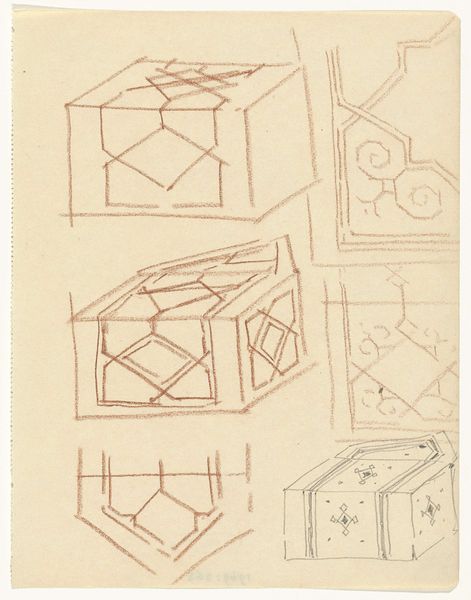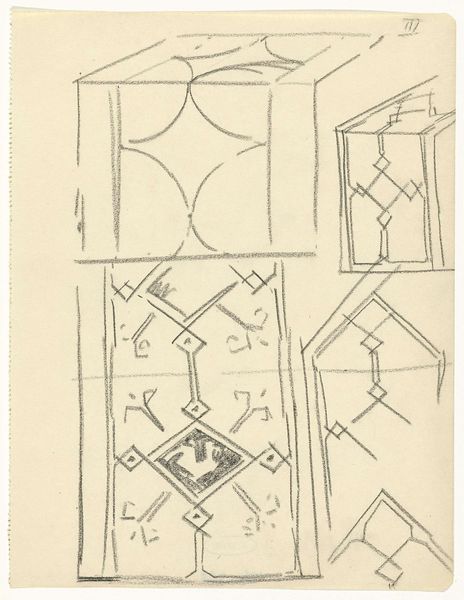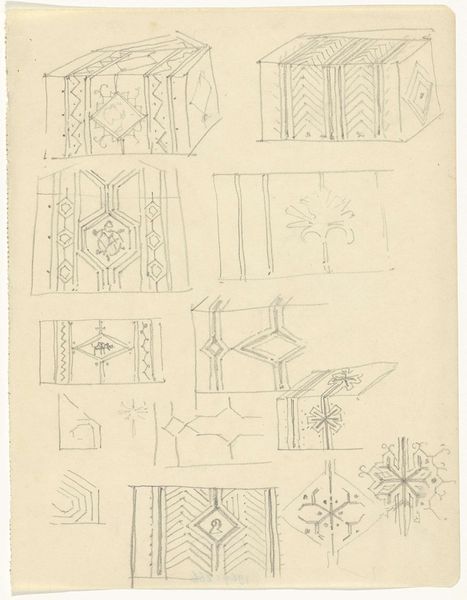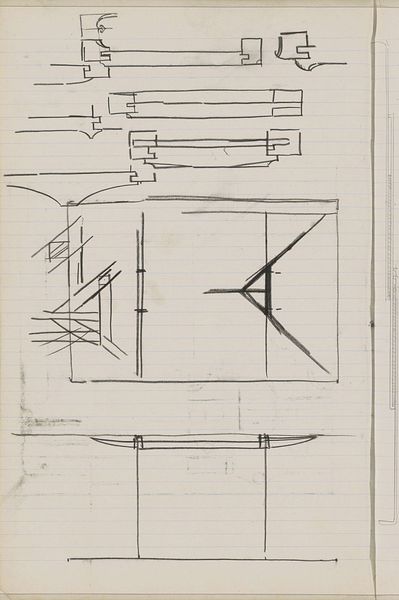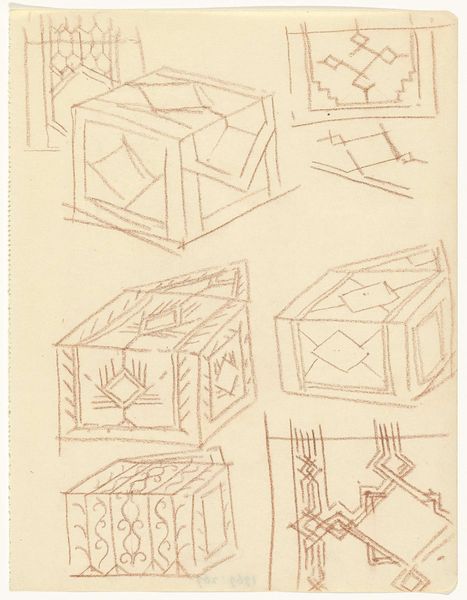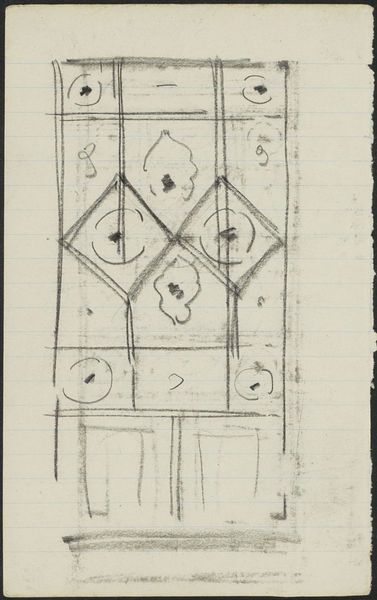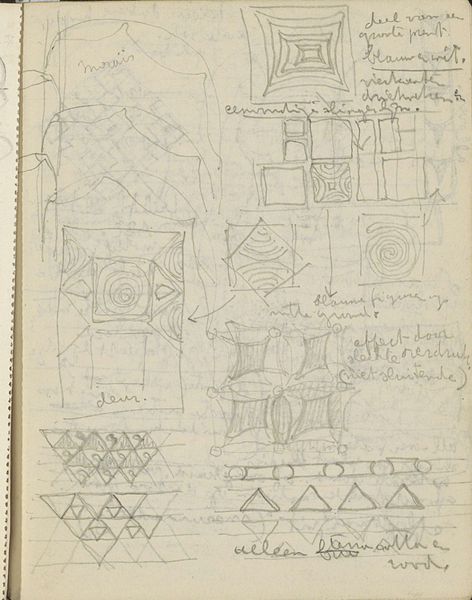
drawing, pencil, architecture
#
drawing
#
geometric
#
pencil
#
architecture
Dimensions: height 215 mm, width 165 mm
Copyright: Rijks Museum: Open Domain
Curator: We're looking at "Ornamentontwerpen op blokken," a pencil drawing made by Gerrit Willem Dijsselhof, likely between 1876 and 1924. What strikes you first about it? Editor: There’s a delicacy to these geometric forms. Despite being pencil sketches, they evoke a certain architectural monumentality, almost as if Dijsselhof is sketching miniature temples. Curator: Absolutely. Knowing Dijsselhof's artistic trajectory, steeped in late 19th, early 20th-century art, one sees how ideas regarding craft, architecture, and societal ideals all came together in the ornamental design. How do you think this fits in? Editor: Ornament always speaks to a desire for meaning, wouldn’t you say? Dijsselhof gives us something more than pure abstraction: geometric frameworks are layered to recall symbols. The cube as the physical symbol for foundations can take a psychological shape as our human connection to something solid, perhaps also echoing Freemasonry concepts. Curator: The question is, for whom? Dijsselhof lived during intense changes in class and gender relations, and ideas around design had implications in class division. Consider the ways craft was valued—or not—and the social values associated with it. What did this symbol mean for the working class, and what implications are there in applying geometry to ornamentation? Editor: Well, given that Dijsselhof moved to designing furniture, I think there’s some democratizing urge at work, a way of giving everyone access to beautiful and historically laden form. I wonder whether the shapes evoke cultural memory even when not immediately decoded. Curator: That act of enfolding history within something we interact with daily seems vital, even revolutionary. To imply it would be beautiful is a fascinating theory. Editor: It does bring something forward regarding that time frame in history, where those architectural memories meet the more human element in design in the social era. Curator: I agree. It gives insight into a social movement when ideas were very different from what we embrace now, which allows viewers to ask these questions. Editor: An invitation for a deep delve into history through everyday things.
Comments
No comments
Be the first to comment and join the conversation on the ultimate creative platform.
